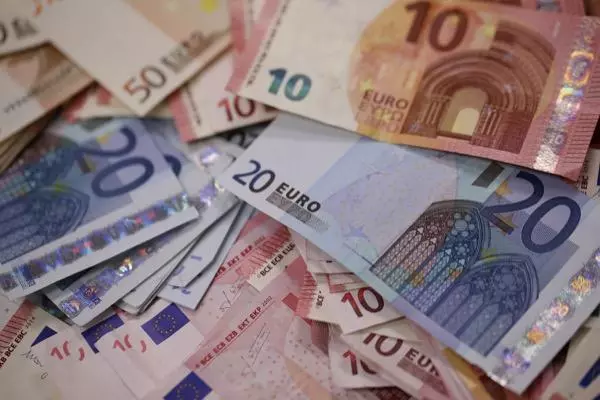Popular times to trade EUR/USD
The most popular time to trade EUR/USD is when the European and US trading sessions overlap. This currency pair often trades with the highest liquidity and volatility between 1pm and 4pm GMT. Learn more about trading EUR/USD.

European and US trading session overlap
Foreign exchange (FX) markets are open 24 hours a day, five days a week. However, the most popular times to trade EUR/USD (or any currency pair) is when it is most active – when the highest volume and number of transactions are taking place. When there is more volume, there is increased liquidity and higher volatility. These create larger moves in the price of EUR/USD and more trading opportunities.
Major FX pairs trade 24 hours, Monday to Friday. EUR/USD is open/active from 4am/5am on Monday until 5am/6am on Saturday Singapore time, depending on daylight savings time (DST). However, it’s the most active when the European and US trading sessions overlap between 8pm/9pm and 11pm/12am Singapore time.* While volatility changes over time, the most volatile hours don’t change too much. This means that the common time to trade the EUR/USD pair is in this 8pm to 11pm time window.
Economic data releases and central bank announcements in both the Eurozone and the United States impact the EUR/USD currency rate because they can generate increased volumes in trading. For the US, its main economic data releases are announced between 8pm/9pm and 11pm/12am Singapore time,* but there’s an important exception. The Federal Reserve's announcement on interest rates is released at 2am/3am Singapore time,* and this event typically creates an increase in volatility and trading activity.
Factors affecting the EUR/USD exchange rate
The EUR/USD exchange rate, like all foreign exchange trading, is impacted by macroeconomic data, geopolitical events and central bank decisions.
Economic data
Economic data releases can impact the price of the EUR/USD currency pair, as they indicate potential strengths or weaknesses in the underlying economy. A strengthening economy usually leads to a higher currency, as it may influence growth or interest rate expectations. Inflation, balance of payments, employment and GDP are some of the important data releases. The Eurozone includes countries like Germany, France, Spain and Italy. Each country releases their economic data separately, so there are a large number of data points that need to be monitored.
Political events
Geopolitical events can impact the EUR/USD exchange rate. For example, when Russia invaded Ukraine, Europe was heavily reliant on Russian gas as a source of energy. The increased cost of power and energy across Europe – along with concerns that factories in Germany may be forced to shut operations over the winter – led to a sharp sell-off in the EUR/USD rate as the US economy was less reliant on Russia for its energy supplies.
Elections and government policy decisions can also have a large impact on the EUR/USD exchange rate. After an election, a new leader may implement an election manifesto that alters the outlook for the economy. For example, it could involve large public spending plans that require large-scale deficit financing or a sharp increase in taxation. Any policy that changes the outlook for growth can have a material impact on the level of its currency.
Central bank announcements
Decisions made by the Federal Reserve (Fed) and the European Central Bank (ECB) are important drivers of the EUR/USD exchange rate, with interest rates being one of the most important influencers.
There’s usually increased volume and volatility in the price of the EUR/USD exchange rate when the either of the abovementioned central banks makes an interest rate announcement. A higher interest rate can attract more foreign capital to the relevant currency, as it offers a higher return. On the contrary, a lower interest rate tends to see a decrease in foreign capital to the relevant currency.
Risk management strategies
Like with any kind of trading activity, it’s important to carefully manage your risk when trading forex.
Research
You need to ensure that you build up knowledge about the factors that impact the EUR/USD exchange rate, including potential catalysts and upcoming events and data releases. You can use IG Academy to help improve your understanding of trading and check our economic calendar for upcoming data releases.
Size
You need to be aware of the impact of leverage on your profits and losses. Your total risk is not limited to your initial outlay, and gains and losses will be based on the full trade value. Correctly sizing your position should ensure that any losses sustained are manageable.
Exit points
Managing your risk should include choosing your exit points. You can use stop-loss and take-profit orders to exit positions. Stop-loss orders can protect your trades against significant losses, and take-profit orders can secure profits you've made on a position. Following a disciplined trading plan can help reduce emotion in decision-making.
How do I start trading EUR/USD?
With us, you can trade EUR/USD using contracts for differences (CFDs) by following these steps:
- Open a trading account or practise on a demo account
- Select the EUR/USD currency pair
- Decide whether to sell or buy
- Manage your risk
- Open, monitor and close your position
Research and education
You don't own the underlying asset when trading CFDs, but you're taking a position on its price movement. Your currency exposure and initial margin will vary according to the contract of the asset chosen.
Remember, trading with CFDs comes with added complexity and risk attached to leverage. Your position will be opened at a percentage of the underlying market – but you can gain or lose money much faster than you might expect. You could even lose more than the initial margin that you paid, and your potential profits and losses are magnified. So, it’s important to manage your risk carefully.
Popular times to trade EUR/USD summed up
- The most popular time to trade EUR/USD is typically between 8pm/9pm and 11pm/12am (Singapore time)* when the European and US trading sessions overlap. This is because EUR/USD typically trades with the highest liquidity and volatility during that time, creating the most trading opportunities
- Economic data releases, geopolitical events and central bank announcements can affect the transaction volume and volatility of the EUR/USD exchange rate
- As with all trading activity, it’s important to manage your risk carefully when taking a position on EUR/USD
* Depending on DST.
IGA, may distribute information/research produced by its respective foreign affiliates within the IG Group of companies pursuant to an arrangement under Regulation 32C of the Financial Advisers Regulations. Where the research is distributed in Singapore to a person who is not an Accredited Investor, Expert Investor or an Institutional Investor, IGA accepts legal responsibility for the contents of the report to such persons only to the extent required by law. Singapore recipients should contact IGA at 6390 5118 for matters arising from, or in connection with the information distributed.
The information/research herein is prepared by IG Asia Pte Ltd (IGA) and its foreign affiliated companies (collectively known as the IG Group) and is intended for general circulation only. It does not take into account the specific investment objectives, financial situation, or particular needs of any particular person. You should take into account your specific investment objectives, financial situation, and particular needs before making a commitment to trade, including seeking advice from an independent financial adviser regarding the suitability of the investment, under a separate engagement, as you deem fit.
Please see important Research Disclaimer.

Start trading forex today
Trade the largest and most volatile financial market in the world.
- Spreads start at just 0.6 points on EUR/USD
- Analyse market movements with our essential selection of charts
- Speculate from a range of platforms, including on mobile

